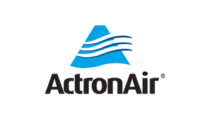
Evaporative Cooling vs Air Conditioning
Evaporative cooling and air conditioning are two of the most popular cooling solutions in Australia.
Technically speaking, evaporative cooling IS a form of air conditioning, but for comparison, we are splitting evaporative and air conditioning into categories based on their unique processes used to cool the home.
When we say evaporative cooling, we’re referring to the roof mounted systems that rely on water to cool. Air conditioning, however, refers to wall mounted split systems and ducted solutions that can heat and cool. This dual function is referred to as reverse cycle.
Both types of system are effective under the right circumstances, but neither is one-size-fits-all. So, we are determining which is superior through a no-holds-barred showdown: evaporative cooling vs air conditioning. We’ll walk you through the main event blow-by-blow to determine which is right for you and your home.
Evaporative Cooling Compared to Air Conditioning – What’s the Difference?
The main difference between the two is that an evaporative cooling system uses water to cool air and then directs it through your home while air conditioning (split systems and ducted), relies on refrigerant gasses and a chemical process to cool the air
Although there’s more to consider if you’re planning on backing a winner.
How Does Evaporative Cooling Work?
Evaporative cooling is a highly efficient, eco-friendly cooling system. It works by drawing in hot, dry air and filtering it through water-filled cooling pads via the roof-mounted unit.
This causes the water to evaporate and form a cooling vapour. The evaporative cooler system’s fan then disperses the air to either a central location or desired rooms through a series of discreet vents.
Evaporative cooling systems will often be referred to as swamp coolers, even if they are largely ineffective in high humidity environments.
How Does a Reverse Cycle Air Conditioner Work?
Modern split systems, multi-head units and ducted air conditioners all rely on refrigerant gases for powerful performance. Most units produce reverse cycle air, meaning they can offer both heating and cooling, making them suitable all year-round.
Air conditioning units are typically split into two parts – one unit indoors and a compressor outdoors. The two work in tandem to remove hot air from a house while refrigerant gas cools the incoming airflow to lower the temperature of a room.
Air conditioners are known for their efficiency but also high running costs, making them too costly for some.
1. Upfront Price
The price of a new system will always depend on its size, performance and difficulty of the installation. Based on the cost of the unit alone, it’s the split system air conditioner that weighs in as the most affordable option.
For example, a 7kW or 8kW wall-mounted Panasonic split system is powerful enough to provide warm or cool air to a large space like an open-plan living room. You can purchase one of these air cons for anywhere from $1700 to $2400.
In comparison, a 46-litre Brivas evaporative air conditioner offers similar performance for $2400 to $3400, with the price differing between models.
The ductwork, ventilation, compressor and installation required will always vary from job to job. So, the best way to find the exact upfront cost would be through a quote or series of quotes for comparison.
Winner: Reverse cycle air conditioning
2. Running Costs
Evaporative cooling is one of the most economical cooling solutions available. These systems rely on fans and water pumps, making them more energy efficient than refrigerant air conditioning.
Canstar Blue reports that the average reverse cycle split system air conditioner costs around $0.60 per hour to run. In contrast, an evaporative cooling system costs less than $0.10 per hour with another $0.02 for water.
The comparison website suggests that ducted evaporative cooling powered by inverter technology has a minimum annual running cost of $65.
Ducted refrigerated air conditioning with a 3.5-star energy rating racks up a minimum of $150 in annual costs. This price only rises if the refrigerant ducted system services more than one room.
With heating and cooling accounting for anywhere from 20% up to 50% of a premise’s energy usage, relying on an evaporative unit or a refrigerated air conditioner with a higher energy rating could go a long way to reducing your power bills.
Winner: Evaporative cooling
3. Healthy Choice
Split systems and ducted air conditioners recycle the air that’s already inside the home, reducing its quality and potentially exposing occupants to dust and allergens.
A study published in the journal of Recent Advances in Biology and Medicine surveyed 200 randomly selected individuals and discovered that those who rely on air conditioning are more likely to experience breathing difficulties, irritated skin, headaches and fatigue. These health problems would increase in severity following the length of air conditioner exposure.
Alternatively, evaporative coolers rely on a steady supply of fresh air which is healthier and ultimately better for breathing.
Quality evaporative coolers will drain water when it’s not required, so there’s no standing water to act as a breeding ground for bacteria. A dusty ventilation system or excessive outdoor pollution are the main factors that can affect the fresh air quality of evaporative cooling.
The journal article also suggests that a regularly maintained or serviced air conditioner will reduce adverse health risks.
Some modern systems including Mitsubishi air conditioners include air purifying features and anti-allergy filters to improve indoor air quality. But if you’re concerned about health, then evaporative cooling is the way to go.
Winner: Evaporative cooling
4. Eco-Friendly
Evaporative coolers use less energy than refrigerated air cons and rely on zero gasses, making them the ideal options for reducing your carbon footprint.
Seeley International is Australia’s largest heating and cooling manufacturer. The brand estimates that its evaporative cooling systems reduce CO² emissions by up to 80% when compared to reverse cycle air conditioners.
Each generation of air conditioners is more environmentally friendly than the last, but they are a major contributor of greenhouse gas emissions through energy use. Reports suggest that more than 24% of all Australian energy usage goes towards cooling solutions, making air conditioning one of the most significant contributors.
Then there’s the issue of refrigerants. Damaged air cons and systems that are not properly maintained can leak refrigerant gasses. One kilogram of the common refrigerant R-410A has the same environmental impact as two tonnes of carbon dioxide, which is the equivalent of running your car for six months.
In 2018, 196 countries agreed to phase-down 85% of refrigerant emissions by 2047, which does little to solve the problem right now. So, whether you’re favouring evaporative air conditioning or not, these surprising statistics are excellent reasons to have your current air conditioner checked for leaks. Or why not ditch that outdated model and consider an eco-friendly upgrade?
Winner: Evaporative cooling
5. Performance
While both options can provide powerful climate control, evaporative cooling units become less effective in humid climates.
As the cooling effect relies on evaporating moisture, these systems work best in hot, dry conditions and can’t achieve desired results when the outside air is already moist. Melbourne, Adelaide and Perth would be ideal for evaporative, but “wet” or humid tropical areas like North Queensland should choose air con or another alternative over evaporative coolers.
Winner: Reverse cycle air conditioning
6. Temperature Control
Evaporative cooling units do not heat. They only cool. An evaporative system will likely feature options for changing the speed or strength of the fan, but it will always remain exclusively cooling.
So, an alternate heating solution may be required come winter. However, most modern air conditioning units are reverse cycle, so they can help you achieve comfort all year round.
The other issue is that several doors and windows should be left open when using an evaporative air cooler so the hot air can escape the home.
On a 40°C-plus day, you may not want to have the doors and windows open at all when you’re worried about the indoor air temperature. A reverse cycle system can remove warm air at the same time it provides the comforting coolness.
Winner: Reverse cycle air conditioning
Evaporative Cooling vs Air Conditioning: Which is Better?
It’s now clear that this heavyweight bout will not end in a knockout as evaporative cooling and air conditioning are currently sitting on three points each.
So, the best way to determine which system is right for you is by weighing up their pros and cons.
Are you concerned about energy efficiency or environmental impact? Then go with evaporative air conditioning. Do you live in a humid climate and require a system with reverse cycle air functions to warm in the winter? A split system or ducted air conditioner could be right for you.
There’s a lot to consider, but when you’re ready to proceed with a quote or even if you’re looking for additional advice on selecting the right system for climate control, contact us at Metropolitan Air Conditioning.
Please note: This information is provided for advice purposes only. Regulations differ from state to state, so please consult your local authorities or an industry professional before proceeding with any work. See our Terms & Conditions here.
Published: 2020-12-15

































